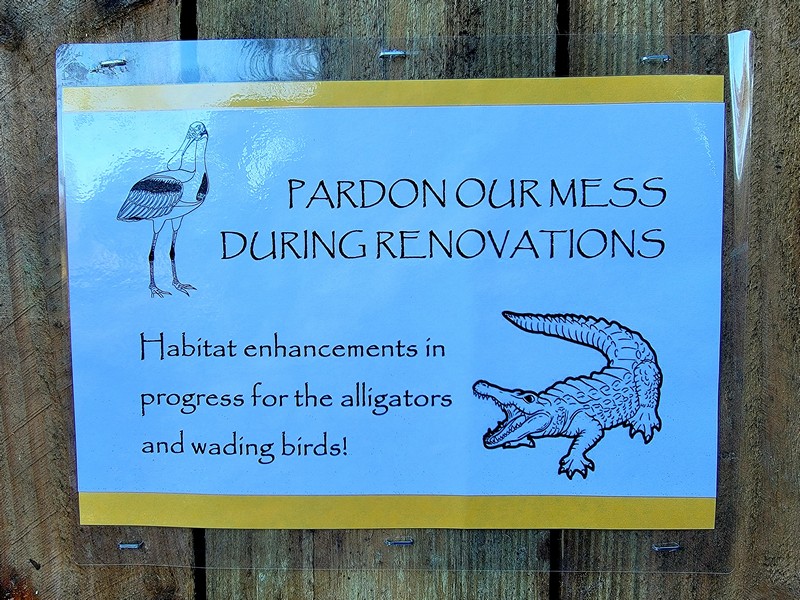
04 Mar Native Swamp & Rookery Renovation
The alligators and wading bird rookery place a lot of strain on the 2 acre Native Swamp & Rookery habitat. Annual maintenance work is done to ensure the environment is more than suitable for all the critters and guests residing within and passing through. Every few years, a larger overhaul is required which was once again necessary this past fall into winter.
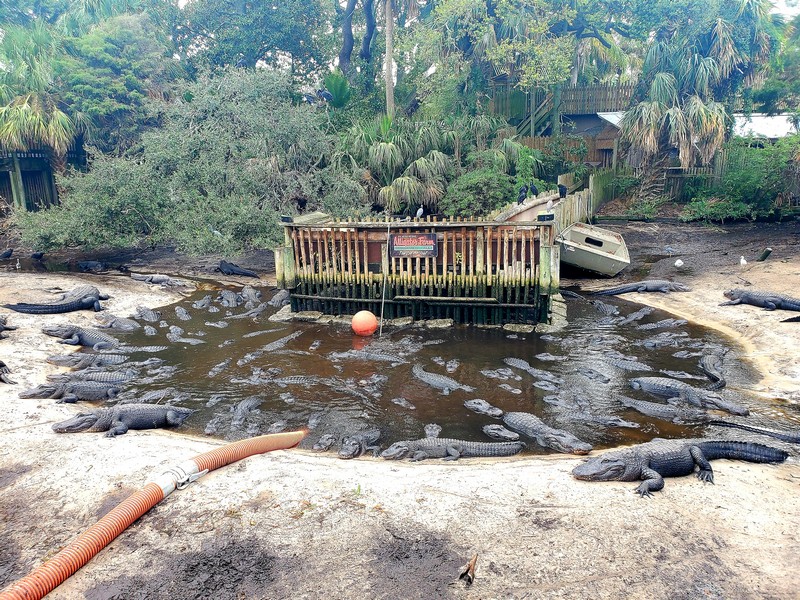
We drained the swamp! It naturally only drains about halfway, so the water needs to be pumped out with machinery. Alligators congregate closely together in the wild during dry seasons when water levels get low. How many can you count in this picture?
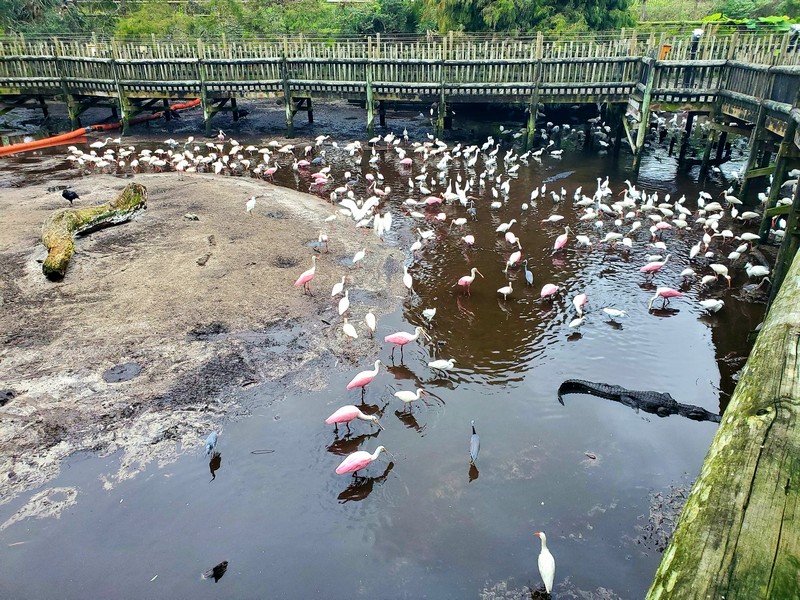
For a few days, the swamp was partially drained resulting in the perfect water level for the wading birds to feed on mosquito fish, tilapia fry (not introduced by the zoo), snails, and crustaceans.
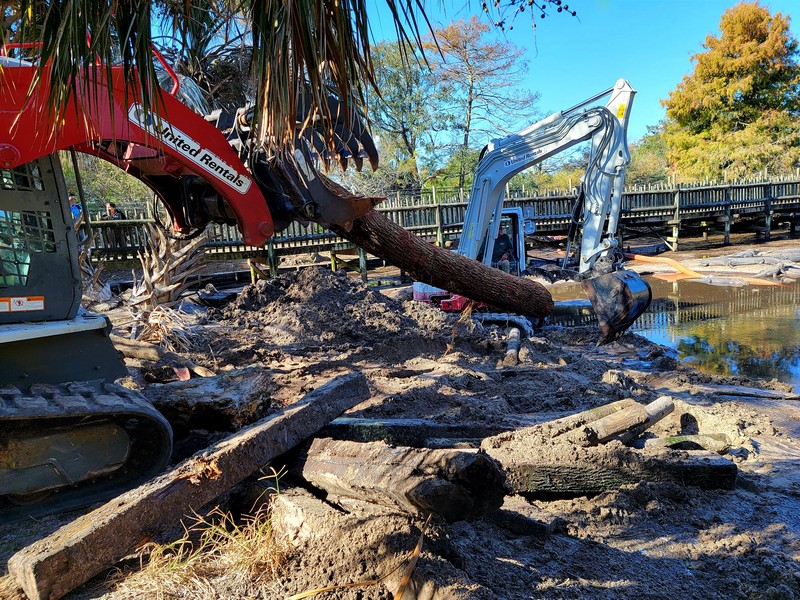
Old, environmentally un-friendly creosote logs were removed and banks rebuilt with oak logs.
Basically the maintenance department playing an adult version of pick-up sticks.

More bank work to be done, but Hershey, the male American crocodile, said nope.

The swamp’s alligator population slides in and out of the water, moving the dirt around while exposing tree roots and reducing the size of the basking areas.
Frank’s digger moves dirt faster.
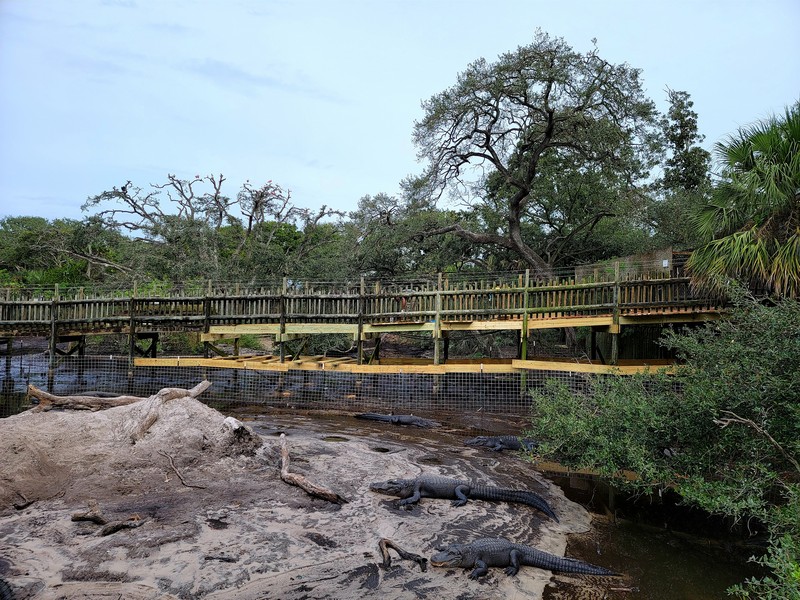
A portion of the boardwalk was secured from wandering predators in order for the maintenance department to refurbish the section out of the Gomek building.
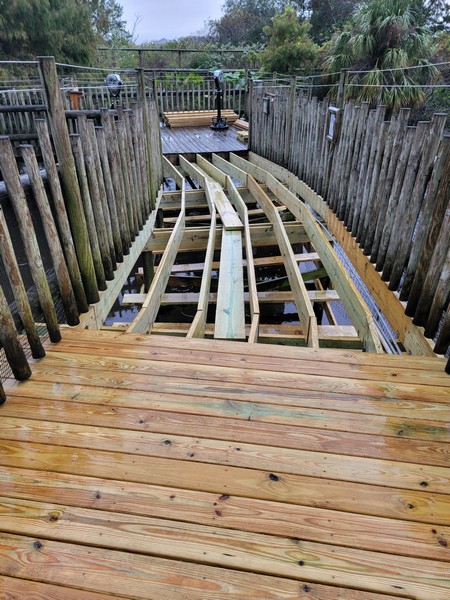
So pretty and not a single wading bird splat! Don’t worry, it has already been re-stained with fish-eating fecals to mark their target practice.
Photographers- please note that the lowest section of wire has been removed along both sides of this stretch in order to improve camera shots for those of lower stature.
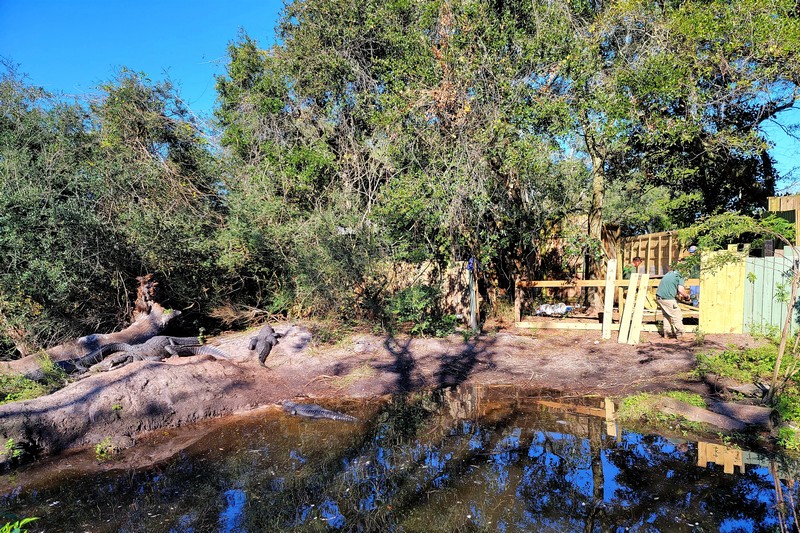
Fence lines were also replaced where necessary. Per Florida Fish & Wildlife regulations, the enclosure fence needs to be a minimum of 5 feet in height.
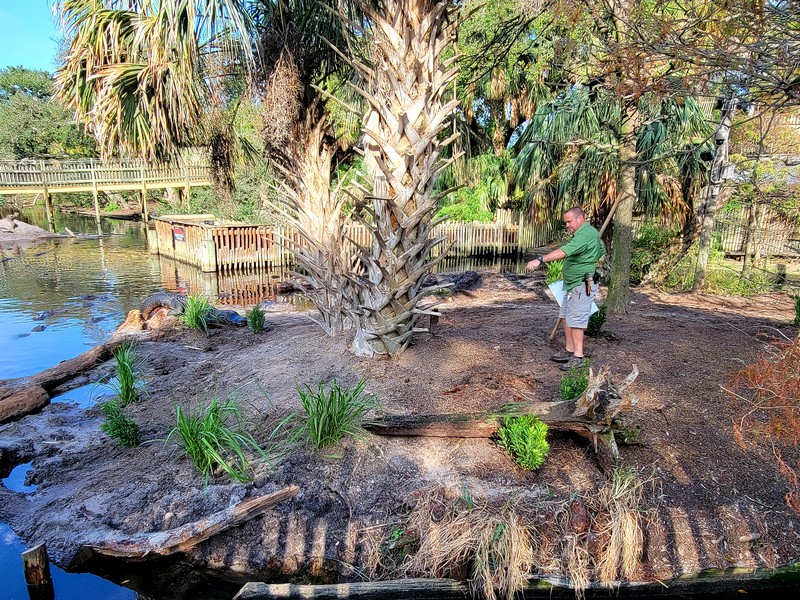
Invasive plants were removed (again, this is an ongoing process) and native plants added: fakahatchee grass, wax myrtle, yaupon holly, and coastal riparian seed mix.
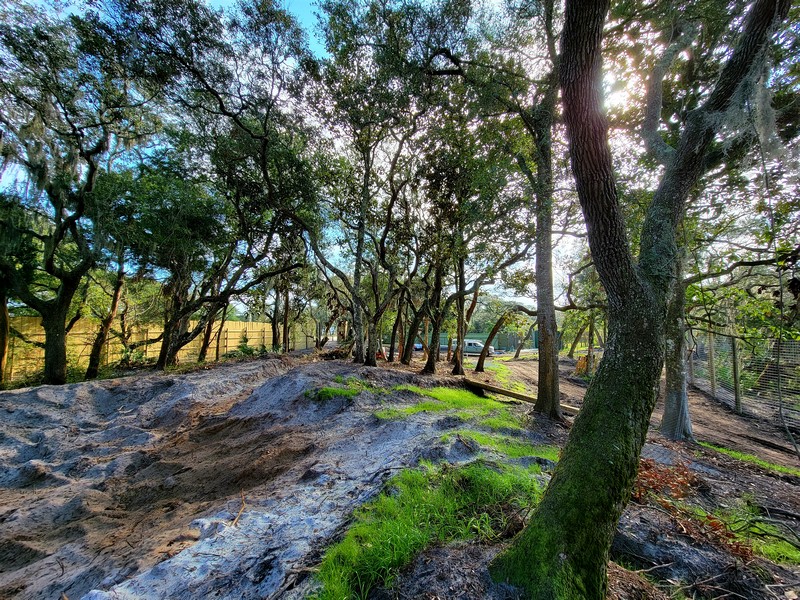
For those of you that have noticed the construction at the north end of the swamp, we have officially expanded that space! It is currently not open to the public, but a ~10,000 sq ft crocodilian habitat was developed for additional wading bird nesting habitat. Behind-the-scenes tours may be available in the fall, for now we want the space to be quiet in order to encourage birds to nest there. An extensive amount of invasive plant species were removed.
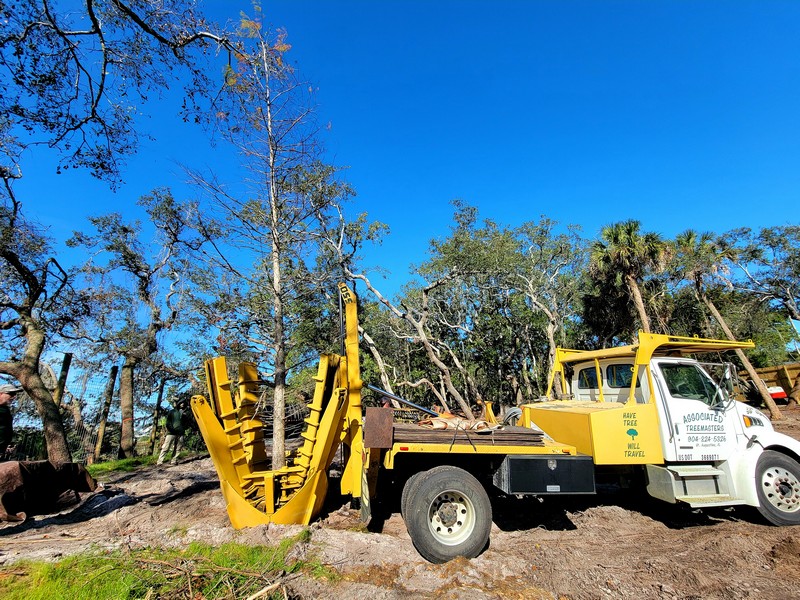
Five large bald cypress trees were installed in the swamp expansion. The smallest was about 20 ft in height!
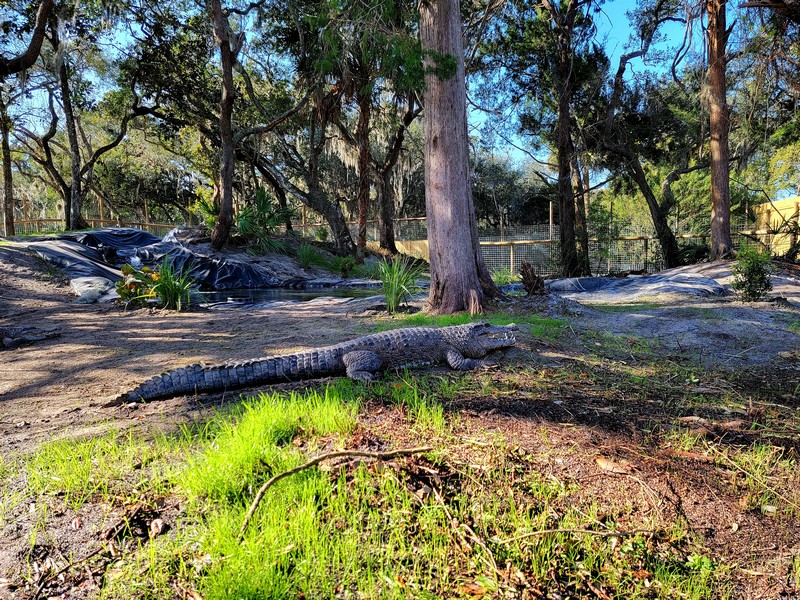
The new swamp expansion habitat, dubbed Holly Springs, now houses a few dozen crocodilians, including the notorious van escapee.
Here he is shortly after his adventure that went viral on social media.
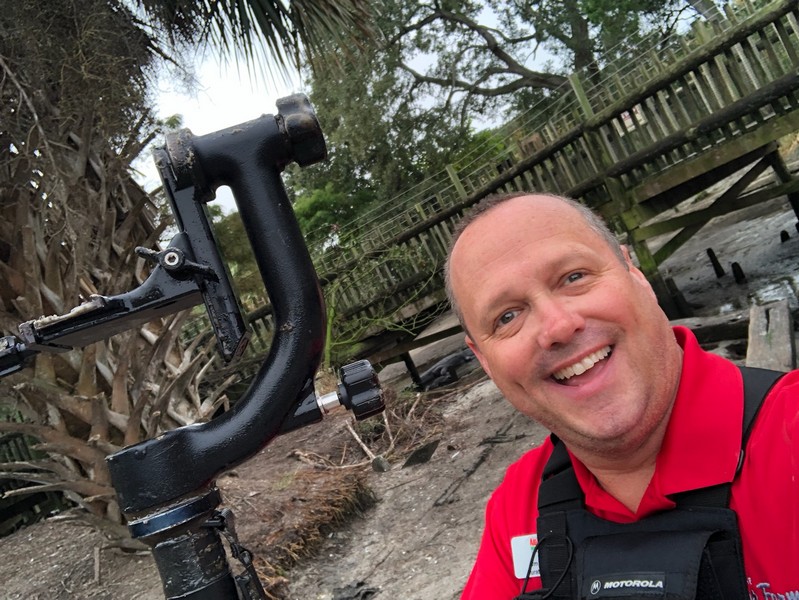 The best part of this renovation was finally locating the missing camera tripod that a photographer dropped into the swamp last May, resulting in what we now refer to as the “Jimcident.”
The best part of this renovation was finally locating the missing camera tripod that a photographer dropped into the swamp last May, resulting in what we now refer to as the “Jimcident.”
Please, everyone, keep your arms, legs, and belongings inside the ride!
